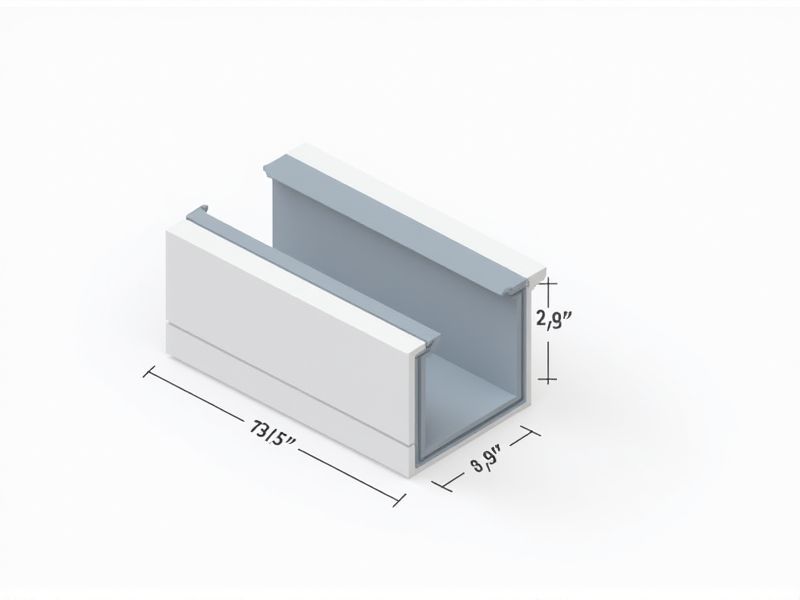
Standard gutters typically come in two main width sizes: 5 inches and 6 inches. Five-inch gutters are most common for residential homes and work well for modest rainfall, while 6-inch gutters are often used for larger roofs or areas with heavier precipitation. The standard downspout sizes are usually 2x3 inches or 3x4 inches, matching the corresponding gutter size for efficient drainage. Choosing the right gutter size ensures water is carried safely away from your home, preventing potential damage to your foundation and landscaping.
Gutter Width
The standard gutter width for residential applications typically ranges between 5 to 6 inches, designed to effectively manage roof runoff. For commercial buildings, the recommended gutter width can increase to 7 inches or more, ensuring adequate drainage in larger structures. You should also consider that a wider gutter can enhance water flow, reducing the risk of overflow during heavy rain events. Proper installation and maintenance of the gutter system is crucial, as even a slight misalignment can diminish its overall effectiveness, leading to potential water damage.
Gutter Depth
Gutter depth typically ranges from 4 to 6 inches, ensuring efficient water drainage and preventing overflow. A standard gutter width of 5 to 6 inches complements this depth, accommodating a variety of roof slopes and rainfall volumes. Maintaining proper gutter depth is crucial for minimizing debris accumulation, ultimately extending the lifespan of your roofing system. Adhering to these specifications can enhance your home's overall water management system, safeguarding your foundation from water damage.
Gutter Material
The standard gutter is predominantly made from materials such as aluminum, vinyl, and copper, each offering unique advantages for durability and maintenance. Aluminum gutters, for instance, are lightweight and resistant to corrosion, with an average lifespan of 20 years, making them an economical choice for homeowners. Vinyl gutters are popular for their ease of installation and low cost but lack the longevity of metal options, typically lasting around 10 to 15 years. Copper gutters, while the priciest at approximately $15 to $25 per linear foot, provide a distinct aesthetic appeal and can last over 50 years, developing a beautiful patina over time.
Gutter Slope
The standard for gutter slope should generally maintain a gradient of 1-2% to ensure proper water flow, preventing pooling and potential structural damage. For example, a 10-foot gutter length should ideally slope at least 1 to 2 inches downwards towards the downspouts. This optimal slope permits efficient drainage, directing rainwater away from your foundation and minimizing erosion. Regular inspections and maintenance of your gutters can help maintain this standard, ensuring longevity and effectiveness in water management.
Gutter Capacity
Standard gutters typically have a capacity of 5 to 6 inches, effectively managing water flow from your roof during heavy rainfall. The design ensures that they can handle significant water volumes, preventing overflow and potential damage to your home. For optimal performance, it's recommended to have downspouts positioned every 30 feet to maintain efficient drainage. Regular maintenance, including cleaning out debris, can significantly extend the lifespan of your gutters and enhance their capacity.
Downspout Size
The standard gutter system typically features a downspout size of 2x3 inches or 3x4 inches, depending on the roof drainage needs. Proper downspout sizing ensures efficient water flow, reducing the risk of clogs and overflow, which can lead to damage around your home's foundation. For roofs with steep slopes or heavy rainfall, larger downspouts may be necessary to accommodate increased water runoff. Ensuring that your downspout size matches your gutter capacity optimizes overall drainage performance and promotes longevity.
Gutter Thickness
The standard for gutter thickness typically ranges from 0.027 to 0.032 inches, crucial for ensuring durability and resistance to bending or warping under various weather conditions. A thicker gutter can handle larger volumes of rainwater, which is essential for effective water management in residential and commercial buildings. Choosing a gutter with the appropriate thickness can significantly reduce the risk of leaks and overflow, contributing to your property's longevity. Always consider local climate conditions when selecting gutter thickness to optimize performance and efficiency.
Gutter Style
Standard gutters typically offer a 5-inch width, which effectively manages everyday rainfall for most homes. These gutters are available in various styles, including K-style and half-round, allowing you to choose one that complements your architecture. The material options, such as aluminum, vinyl, and copper, provide durability and appeal based on your maintenance preferences and budget. When selecting a gutter style, consider both functionality and aesthetics to enhance your home's exterior.
Seamless Vs. Sectional
Seamless gutters, typically made from aluminum, offer a sleek and continuous design that minimizes leaks by eliminating seams, making them ideal for homes in regions with heavy rainfall. In contrast, sectional gutters consist of pre-manufactured pieces that require assembly, which can lead to potential weak points and leaks over time. Homeowners may invest approximately $3.50 to $25 per linear foot for seamless options, depending on material and installation, while sectional systems generally range from $1 to $10 per linear foot. Considering both longevity and maintenance, seamless gutters often have a lifespan of 20-30 years, whereas sectional systems may require more frequent repairs or replacements.
Gutter Fastening System
The standard gutter fastening system ensures secure and durable installation of gutters, enhancing their functionality and longevity. Featuring advanced materials and engineering, it can support up to 150 pounds per linear foot, providing stability even in adverse weather conditions. This system minimizes the risk of water damage by promoting efficient water flow and reducing debris accumulation. When choosing a gutter fastening option, prioritize those that offer easy installation and robust resistance to rust and corrosion.
